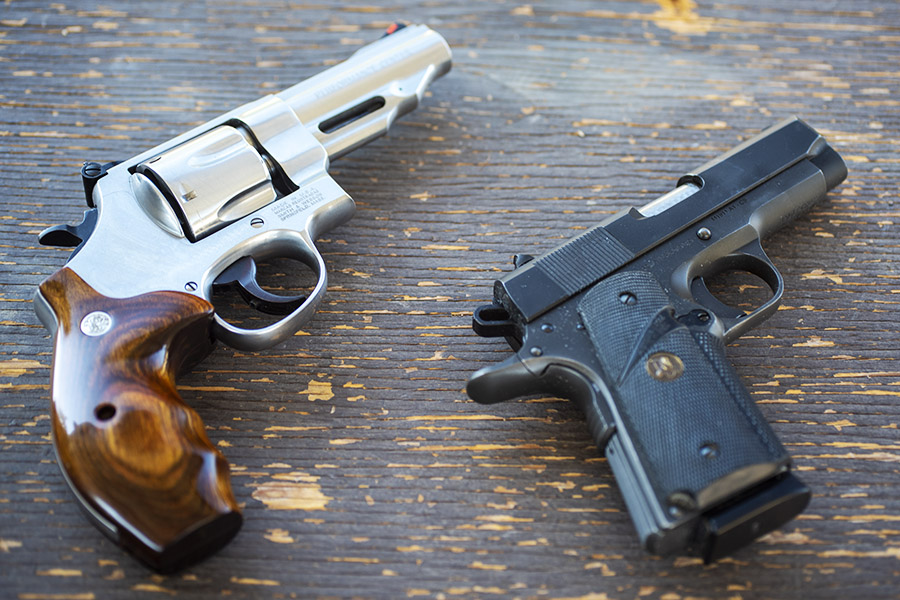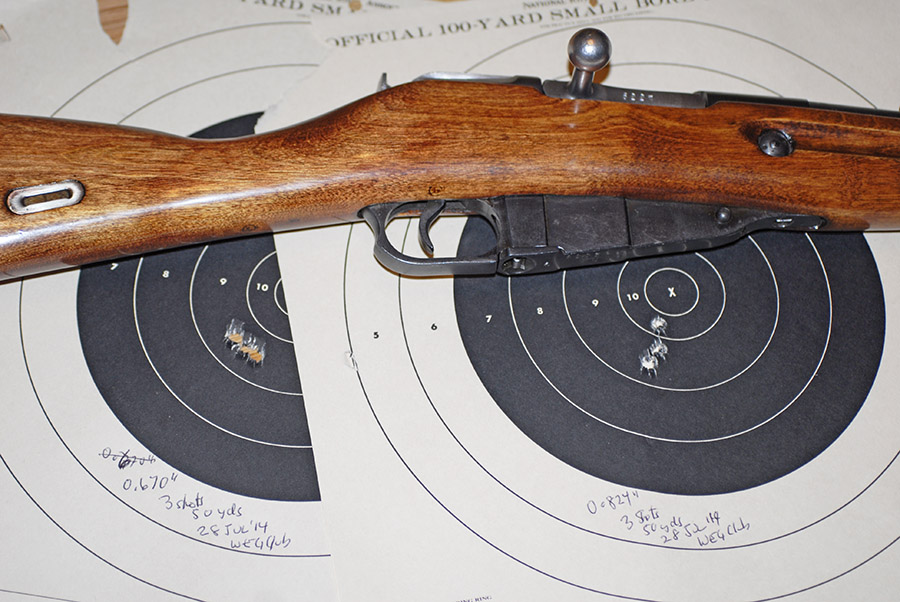This is an interesting video about used bikes under $2,000 that might make for good winter project bikes, and the guy who created it was so taken with the idea of a new CSC bike for under $2,0000 that he included a segment on CSC. CSC is one of our advertisers and both of your blogmeisters (that would be Arjiu and Dajiu) put big miles on the RX3 on rides in China and the US. It’s a good video…our compliments to the guy who put it together. Enjoy!
Author: Joe Berk
A tale of two .45s…
This is an interesting story about the development of the .45 ACP 1911 and a sister military sidearm, the 1917 revolver, and maybe a little more. To really appreciate the history of these two guns, we need to consider three cartridges (the .45 Colt, the .45 ACP, and the .45 AutoRim), and four handguns (the 1873 Colt Single Action Army, the Model 1911 Colt, the Model 1909 Colt revolver, and the Model 1917 revolvers). Wow, that’s a mouthful. But it’s a fascinating story.
So what is this story about? A tale of two .45s, or of four?
The Two .45 Handguns
Well, it started out as a tale of two…the 1911 Rock Island and my Model 625 Smith and Wesson. But I’m getting ahead of myself. Read on..
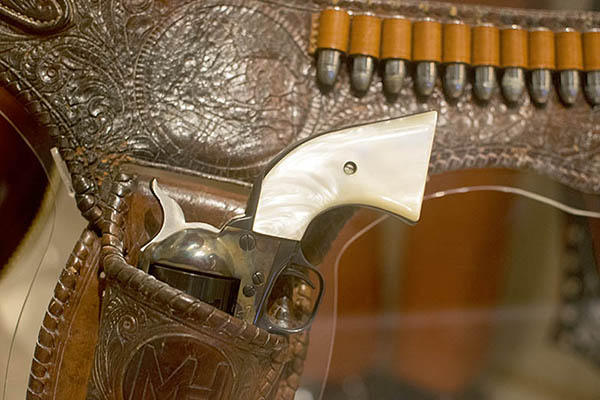
.45 ACP Historical Perspective
To best understand this, we need to go back to 1899, and maybe as far back as 1873. Yep, this tale goes back a century and a half.
In 1899, the Philippine-American War started (it’s also known as the Philippine Insurrection). We sent US Army troops armed with .38-caliber revolvers, Krag rifles, and 12-gauge shotguns to put down the insurrectionists (the Moros), and we found out the hard way that the .38 just wouldn’t cut it as a military sidearm.
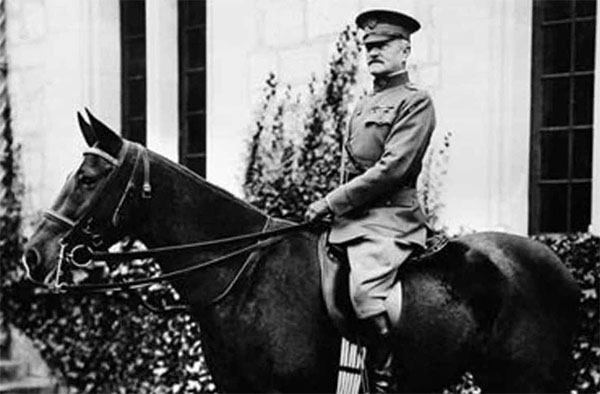
In response to this, or so the story goes, the Army tried all kinds of handgun ideas, including the then-new 9mm Luger. There was a lot more to the story than just the concept that the .38 wasn’t enough gun, but it’s the version that is most frequently bandied about and we’ll stick with it to keep things simple. You hear about drug-crazed Moro insurgents, you hear about religious fanatics, and more. I don’t know which parts are true and which parts are, to use a current term, fake news. But I do know that as a result of that war, the Army wanted a handgun with more power.
The idea of a semi-automatic handgun was cool, but the Army thought the Luger was too complicated and the 9mm cartridge wasn’t much better than the .38. The .38 and 9mm bullets are essentially the same diameter (one is 0.356 inches, the other is 0.358 inches), and neither had enough knockdown power.
Our Army went back to an earlier cartridge, the .45 Colt, a rimmed cartridge used in the old 1873 Single Action Army Colt. It’s the six shooter that you see in the old cowboy movies (the one holstered in the photo at the top of this blog). The old 1873 was a single action sixgun (you had to pull the hammer back for each shot). By the time the Moro Wars rolled around, both Colt and Smith and Wesson had double action revolvers. On those, all you had to do was pull the trigger (that cocked the action and fired the weapon). To meet the new need in the Philippines, Colt manufactured double action revolvers (their Model 1909) chambered in the .45 Colt round. The Army was all for it, and they felt it met their needs (at least on an interim basis).
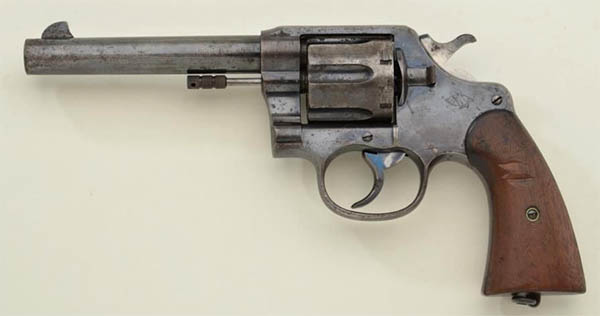
Having played with the Luger, though, the Army liked the idea of a semi-automatic handgun. But that puny 9mm round wasn’t enough back in those days, so the Army invited firearm manufacturers to submit larger caliber automatic pistol designs.
The 1911
The winner, of course, was John Browning’s 1911 design, and the .45 auto came into being as the US Army Model of 1911. It was a new gun and a new cartridge. The 1911 couldn’t shoot the rimmed .45 Colt cartridge used in the 1873 Peacemaker and Colt’s double action Model 1909 handguns. Instead, it used a new .45 ACP round (“ACP” stands for Automatic Colt Pistol), which fired the same big .45-inch-diameter bullet in a rimless cartridge case (actually, the cartridge has a rim, but the rim is the same diameter as the rest of the cartridge case, and that allowed it to work in the new semi-auto).
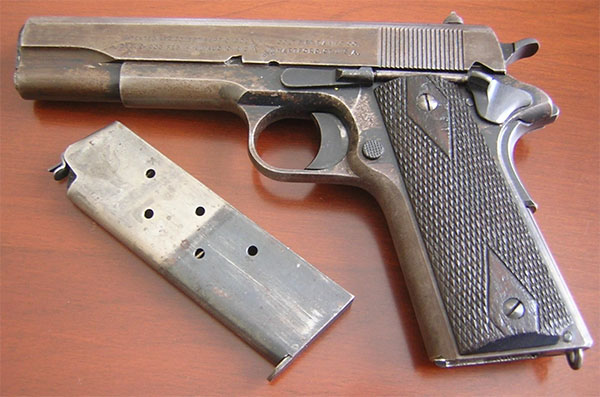
The 1917 Colt and Smith and Wesson Revolvers
Fast forward a few more years and World War I started. The Army’s preferred handgun was the 1911, but there weren’t enough of the new semi-autos. Colt, and Smith and Wesson came to the rescue by modifying their earlier big bore revolver designs to shoot the .45 ACP cartridge, and the Army issued these as the Model 1917 revolver.
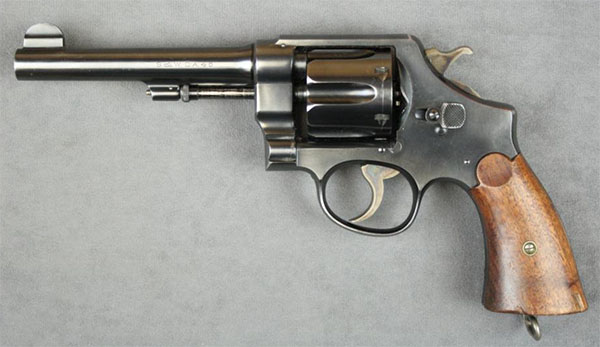
The 1917 double action .45s were phased out of the Army a few years after World War I ended, and they were sold as surplus to the public (things were different back then). Model 1917 revolvers are highly collectible today. I owned an original GI issue Colt Model 1917 back in the 1970s, when you could pick them up for about a hundred bucks. I loved that revolver, but I stupidly sold it 40 years ago. (When discussing firearms, the phrase “stupidly sold” is inherently redundant. Like nearly all of the guns I’ve sold, I wish I still had it.)
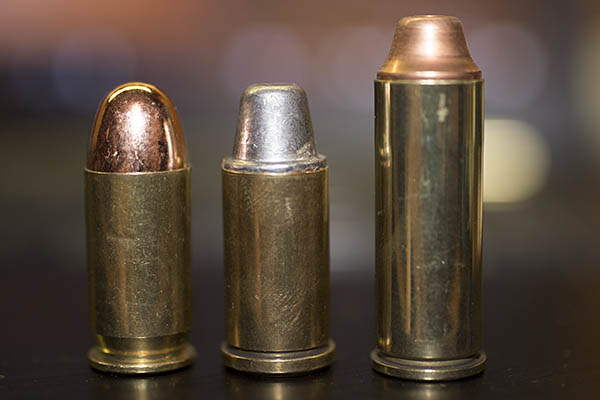
The 1911 .45 auto? It continued as the official US Army sidearm for the next seven decades. I carried one when I was in the Army. Like a lot of shooters, I think it is the best handgun ever.
In 1985, the Army replaced the 1911 with the 9mm Beretta. That (in my opinion) was a dumb move, and apparently the Army ultimately came to its senses with regard to the Beretta, but they stuck to the 9mm Luger round (now the NATO standard pistol cartridge) when they went to a Beretta replacement. The Beretta is being replaced by yet another 9mm (the SIG).
The Model 625 Smith and Wesson
No matter; there are still many of us who consider the 1911 in .45 ACP the ultimate sidearm. I’m one of those guys, but I’m also a huge fan of the double-action revolver in .45 ACP. The good news for me (and you, too, if you’re a .45 auto fan) is that Smith and Wesson still makes a modern version of their double-action revolver in this cartridge. It’s the Model 25 Smith (or, in stainless steel, the Model 625), and it’s a direct descendent of the old 1917 revolver.
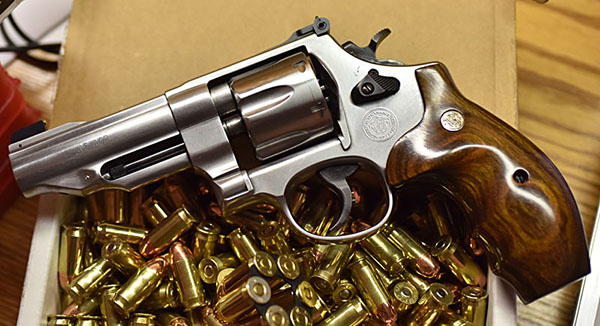
The Rock Island 1911 Compact
I am a lucky guy. I own both the .45 ACP Model 1911 and the .45 ACP Smith Model 625. You’ve read the earlier ExNotes blog about my Rock Island Compact 1911. It’s a sweet shooter and, at just under $500, it’s a hell of deal. And that Model 625? Wow. The Performance Center is Smith’s custom shop, and that revolver is accurate. It should be; it costs twice what the Rock Island 1911 goes for. But both guns are great, and I love shooting both.
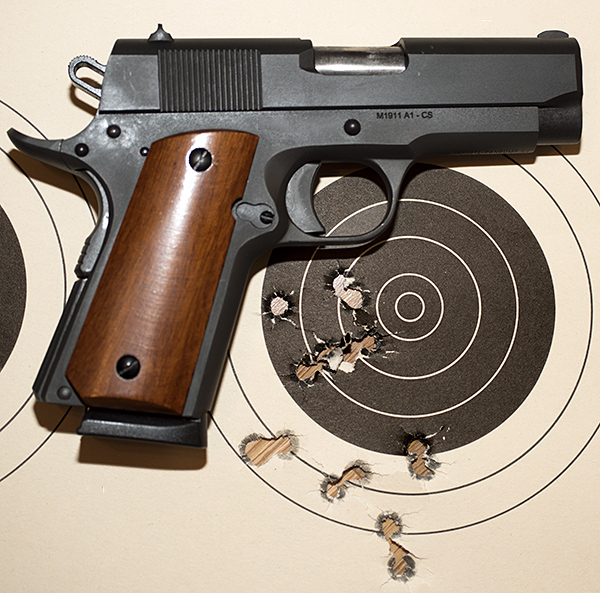
I had both of my .45s out at the range yesterday, and I had a blast (pun intended). Yeah, the revolver is a more accurate handgun than the 1911, but like we used to say in the Army, both are close enough for government work.
.45 ACP Accuracy
So just how well do these guns shoot? The short answer is very, very well. After running through a couple of hundred rounds, I thought it might be a good idea to set up two targets, side by side, and fire six rounds at each (the first six with the 1911, and the second six with my revolver). That’s exactly what I did, and it’s the final photo for this story…
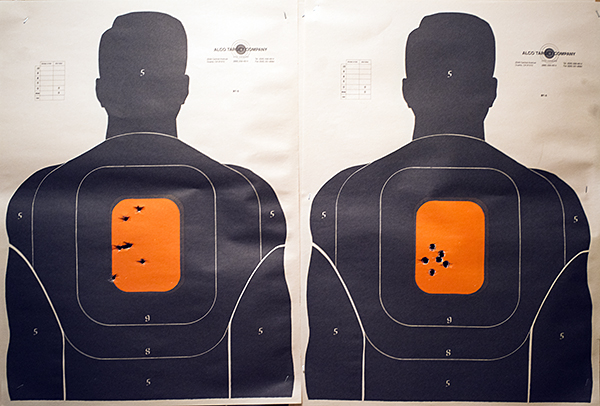
Hit those pop up ads! It’s what keeps the lights on!
The Follow Up: Another Tale of Two 45s
If you enjoyed this post, be sure to see the follow up: Another Tale of Two 45s!
The Gatling Gun
Incidentally, if you like reading about guns and their history, you might want to pick up a copy of The Gatling Gun. I wrote that book, and it covers the early days of the Gatling (the Civil War), the transition to a modern weapon system after World War II, and modern Gatling applications on high-tech weapon systems. I worked on many of these systems, and I worked for the company that manufactured 30mm ammo for the A-10 Warthog. You can read all about that in The Gatling Gun, available from Amazon.
Help us keep the lights on:
Want more gun stories? You can see all of our gun articles here on Tales of the Gun!
Like what you see here? Hey, sign up for a free subscription to the ExNotes blog!
Mike weighs in on moto-camping…and more!
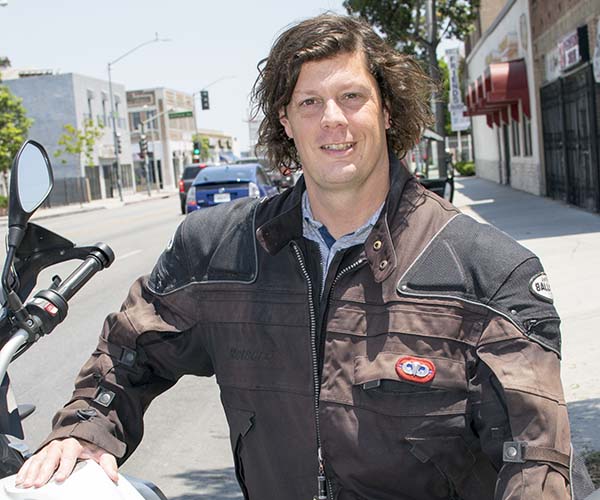
That’s good buddy Mike in the photo above, a very interesting guy I met on our most recent Baja ride. He’s a former US Army 82nd Airborne Division paratrooper, and for the last year or so he’s been living off his BMW and camping as he goes. Mike penned a piece on motocamping, and he sent it to us here on ExhaustNotes.
Here’s Mike’s take on this topic…
Camping can be fun and enjoyable for everyone if you plan properly and set realistic expectations. The same can be said for camping on a motorcycle. Over the past year and a half I have made it a point to camp on my moto at least once a week, and for the weeks I have not met this goal there are long weekends and vacations where I more than make up for it.
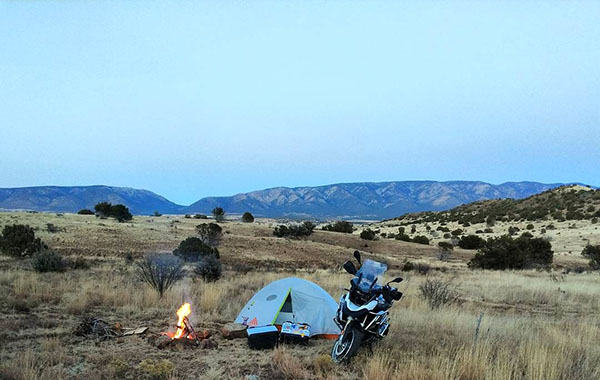
Throughout the past year I have been frequently asked how I choose a campsite on a moto. In this blog I wanted to answer that question from my personal experience.
For the first couple times using a KOA or other publicly-used campground is a great way to ease into camping. You will be camping, but close enough to stores and facilities that you can begin to gauge what you need and start to define your personal camping comfort zones.
After camping in that environment, and after you invariably get sick of listening to kids screaming and another annoyances from humans, you can experiment with camping for free in National Forests. A good note to remember is that National Forests are free to camp in, but National Parks are not.
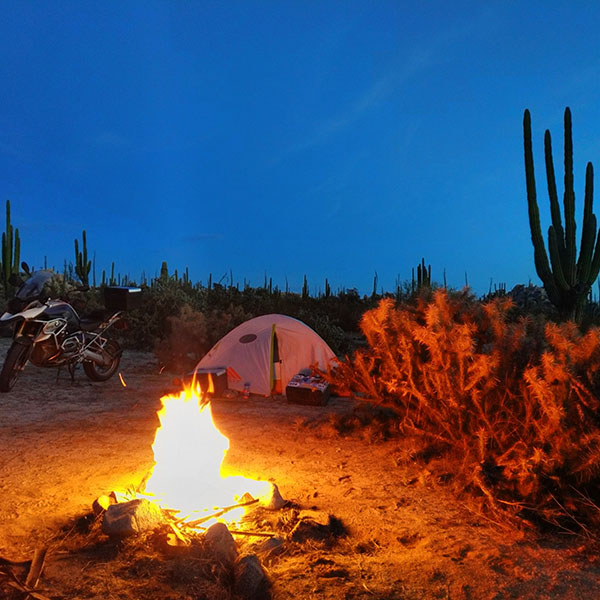
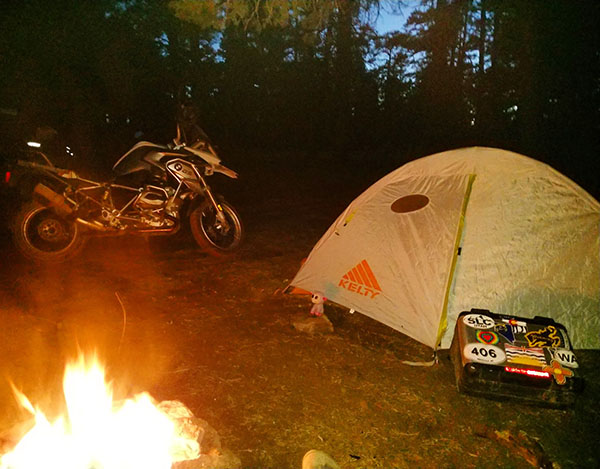
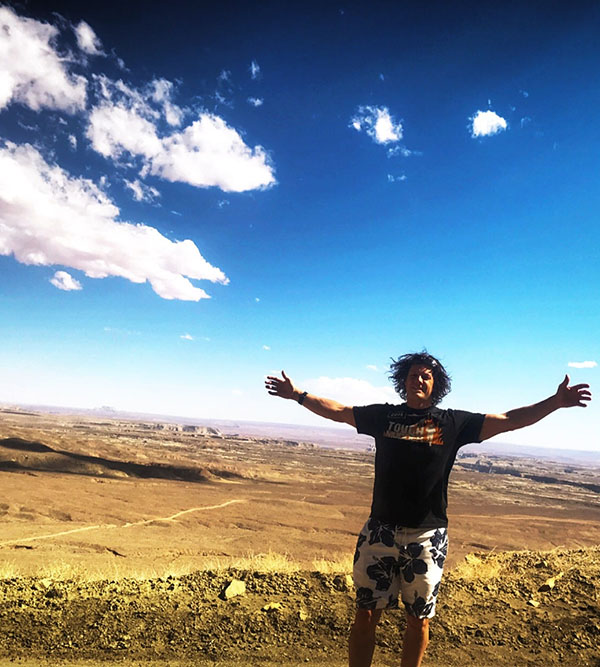
Over the past year I found a number of free remote campsites. I use www.freecampsites.com or I look for National Forests on maps. Once in a National Forest locate a Forest Road (FR) and ride a few miles down it. Many of these FR’s are doable even for street bikes but be aware of changing road conditions as you navigate them. You will often see the remains of a campsite marked with stones from a previous campfire. For me this is the perfect indication that someone has camped here before and is a safe location.
Moto camping is an easy and inexpensive way to escape the rat race with less effort then many would think. Moto camping experiences are some of the most rewarding that I have had throughout my adventures. Being so removed from everything as you sit relaxing in the glow of a warm campfire reflecting off your moto is a fulfilling feeling that few venture to achieve.
At the end of his email to me earlier today, Mike asked if I had any rides planned. Actually, Mike, the answer to that most excellent question is yes. I’m thinking about two motorcycle rides, either one of which might involve camping, so your blog today was very timely.
One ride I’m thinking about is another Baja adventure, and this one would involve more dirt riding than usual (at least for me). I’m thinking about a run up to Mike’s Sky Ranch in northern Baja (I’ve never made that trek, and I always wanted to). Another variation, perhaps part of the same ride, would include a leg from Chapala on the Transpenisular Highway near Catavina through Coco’s Corner to the Sea of Cortez (a 23-mile unpaved section). And another possibility is a run from San Felipe down to Bahia de Los Angeles on the Sea of Cortez, which involves about 70 miles on dirt. I’d like to do this on my CSC TT250, just to say that I did. I’m thinking maybe December for this ride.
There’s another ride on the horizon that my good buddy Dan the K is setting up, and he was kind enough to extend an invitation to me. Dan rode with me a couple of times in Baja on the CSC motorcycles, once on his RX3 and once on his TT250.
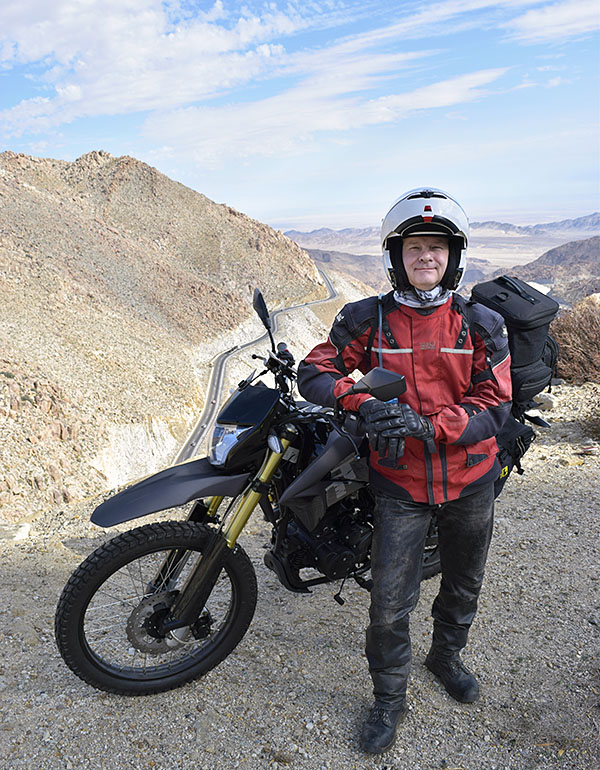
The ride Dan is planning is a much longer adventure ride up to Inuvik in Canada’s Northwest Territories. That ride will involve a lot of camping. It’s coming up next summer, and I’ll keep you clued in on the planning right here on the ExhaustNotes blog.
I’m excited about both rides. On that Baja ride…anybody want to ride with me? Hey, let us know here at info@exhaustnotes.us!
Get notified!
A week or so ago, one of our blog viewers asked if we would add a feature to allow automatic email updates when new blogs are posted. We did, and it’s the widget you see to the right. If you would like to receive an email update when we post new blogs, just enter your email and you’ll be on the update list. We won’t sell or give your email address to anyone else.
A note from Peter…
We had a nice note from our good buddy Peter today, an ardent ADV rider, Norton fan, and fellow Mesa Verde enthusiast…
Joe, I enjoyed your post about Mesa Verde today. A few years ago Sara and I spent the night there and toured the ruins. We agree, photos don’t give the appropriate scale. Our guide made the whole place seem alive! With that said, there are at least two notable things about Dolores. First, they have a pretty decent motel right on the main drag. It’s owned by a Swede (cannot remember his name) and about 4 blocks away they have a good brew pub. Second, just outside of town you’ll find Colorado Norton Works. Matt Rambo (another Swede) is the owner. He has a very small shop that, as I recall, lacks any kind of sign. Inside you will find a motorcycle shop that closely resembles an operating theater, it’s that spotless. Matt will take your Norton and totally rebuild it from the frame up. The end product is absolutely beautiful and improved in so many ways I cannot remember them all. Matt and John Snead (owns a CNC machine shop in Jacksonville, FL) have also designed an improved electric start system for Nortons. I mention all this because you owe it to yourself to visit the shop, meet Matt, and drool over his rolling jewelry. You’ll love it!
Matt and John are both friends of mine. I have visited Matt’s shop three times and even stayed at his house on one trip.
Peter
Thanks for taking the time to write and convey your thoughts, Peter. I had heard of Colorado Norton Works from Gerry Edwards, another good friend. He spoke of them in reverential terms.
For those of you who don’t know, Dolores is a nice little Colorado town just up the road from Mesa Verde. When my good buddy Marty and I rode the Three Flags Rally in 2005 and visited Mesa Verde (my first time there), we rode along the Dolores River into the town of Dolores. It was pouring rain that day, but we had decent weather during our earlier stop at Mesa Verde.

Ride safe, Peter, and again, thanks for your note!
Mesa Verde, Colorado…
Sue and I stopped at interesting spots on our way home from Tinfiny Ranch earlier this month, and one of them was Mesa Verde National Park. I first went there on the 2005 Three Flags Rally with my buddy Marty. On that visit, Marty and I were only there for a quick stop, and I knew it was a place that needed more time.
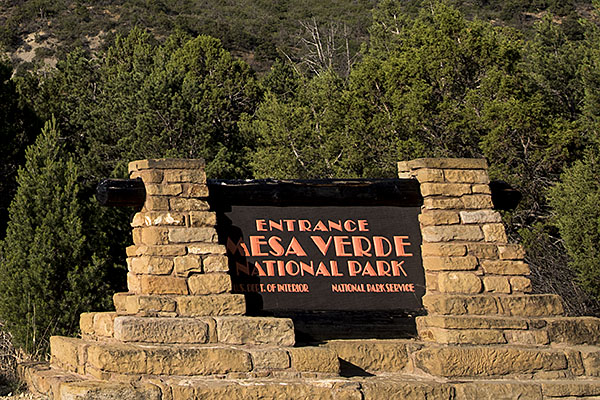
Mesa Verde is just outside of Cortez, in southwestern Colorado. It’s a great little town.
The whole idea behind Mesa Verde National Park is that Native Americans lived in advanced cliff dwellings about a thousand years ago. It’s real Indiana Jones stuff.
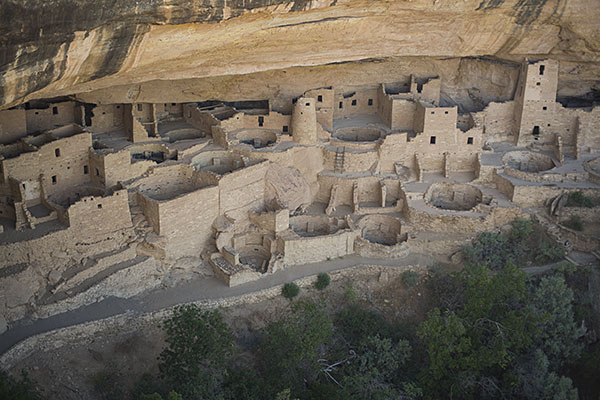
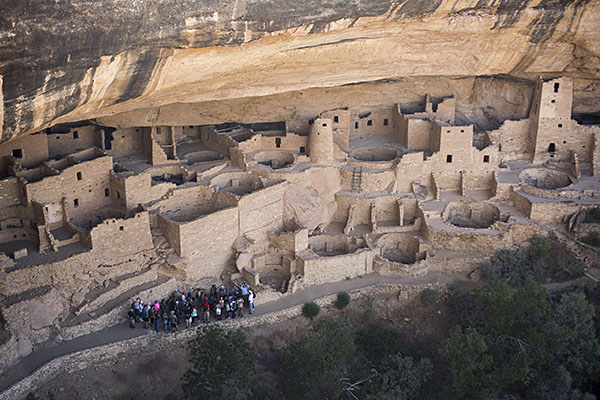
The place was amazing. We were up on a huge mesa looking down into dramatic canyons, and these dwellings were built into overhangs and crevasses in the canyon walls…

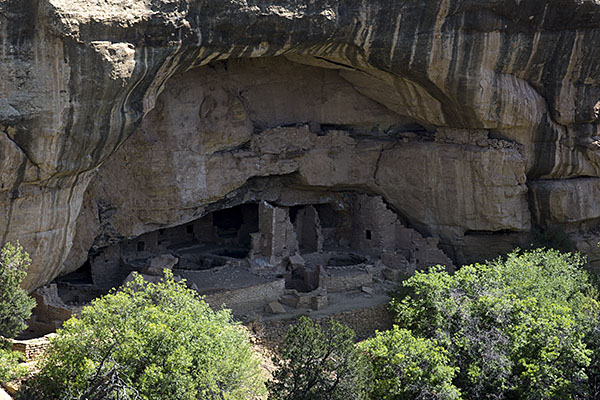

While we were there, we met a nice young guy named Tom, a Canadian artist traveling through the US on a motorcycle…
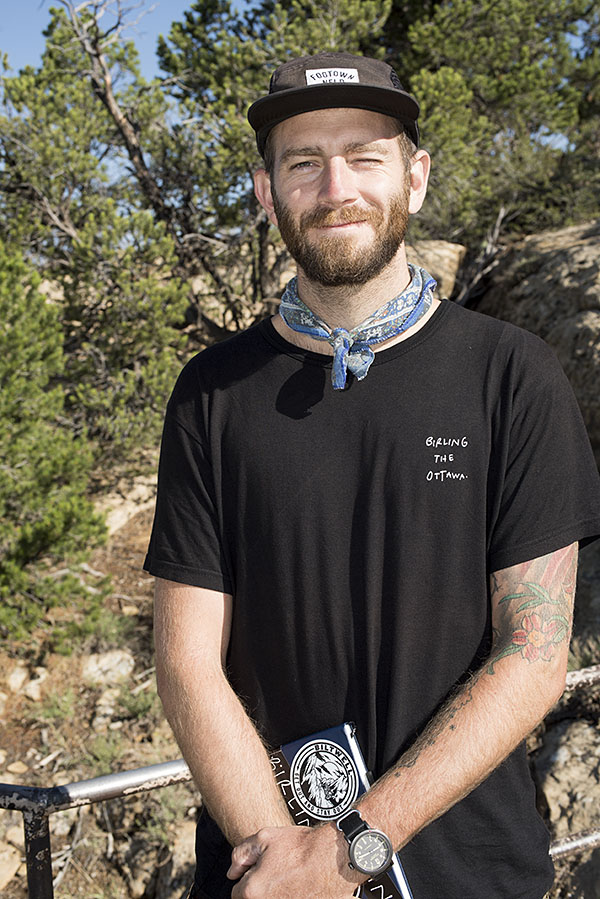
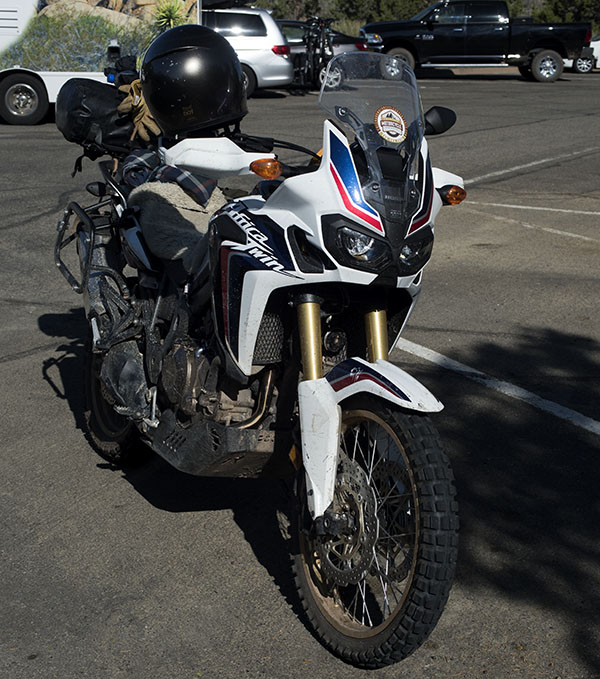
Tom was an interesting man and a world traveler. He gave his card to us and I visited Tom’s website. He’s been to many of the same spots Sue and I have visited, including Turkey (one of the world’s best-kept tourist destination secrets) and southeast Asia (another best-kept secret). You should take a peek at Tom’s site; it’s awesome.
Cool stuff, to be sure. One last Mesa Verde photo today, folks…my signature selfie…

When we were planning this trip, I asked Gobi (that’s Joe Gresh) what he recommended on the ride back to California. One of his suggestions was the Petrified Forest in Arizona. That’s next, folks. Stay tuned!
High end, high class small bikes…
On its face, it seemed like a weak market to target…folks who want very high end, small displacement, expensive custom motorcycles. But it worked.
When CSC revived the Mustang motorcycle concept 10 years ago, the company didn’t really have a grand plan, a handle on the market, or even a clearly defined name. CSC was originally California Scooter Company, and the original plan was to re-introduce a concept pioneered by the Mustang Motor Company in the postwar 1940s.

The idea was to spin off of Pro-One Performance Manufacturing’s line of very high billet and other accessories (and complete large V-twin custom motorcycles), and apply it to a small, modern version of the Mustang. Pro-One, CSC’s sister company, was founded by Steve Seidner (the same guy who started CSC). And boy oh boy, did those little bikes sell. They were beautiful little creations. Jewels, actually. Hand made, and built to extremely high standards. Mirror-like paint. Billet. Chrome. Little choppers. Expensive little jewels you could actually ride.
Ah, but that name…the California Scooter Company. It created confusion. People would see the new California Scooter modern Mustang and ask: Is it a scooter or a motorcycle? They didn’t get that the name was old school. Back in the day, antiques (folks like yours truly) called any bike a scooter. A Harley was a scooter and so was a Triumph…as in “I’m going to ride down to Cabo on my Scooter.”
Me? I wanted to tell anybody who asked that question (is it a motorcycle or a scooter?) that they were too dumb to ride either, but I couldn’t do that. Then one day, the boss hit on the idea of just calling the company CSC Motorcycles. You know, go with the tradition of other world-class marques with three-letter names: BMW, BSA, AJS, KTM, and more. And that worked. The dumbass scooter or motorcycle questions stopped, and the bikes continued to sell.
Back to the modern Mustangs…the initial thought was that the bikes would sell for $4,995, and they’d be a hit with young folks.
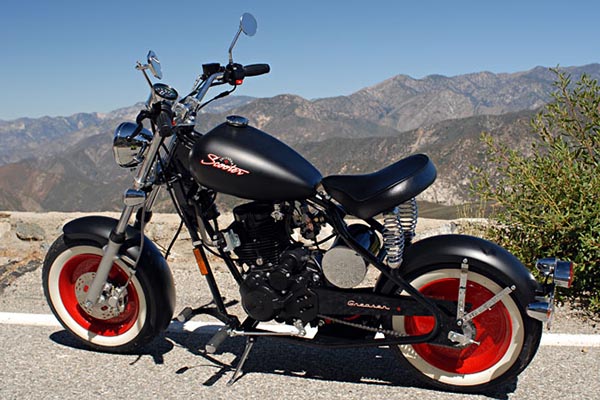
Ah, what we didn’t know. The market will tell you what it is. Plans and fancy marketing studies mean nothing. A hit with young folks? The problem with young folks is that they don’t have any money and they don’t buy motorcycles. Hell, a lot of them don’t even want driver’s licenses. Just, like, you know, call an Uber.
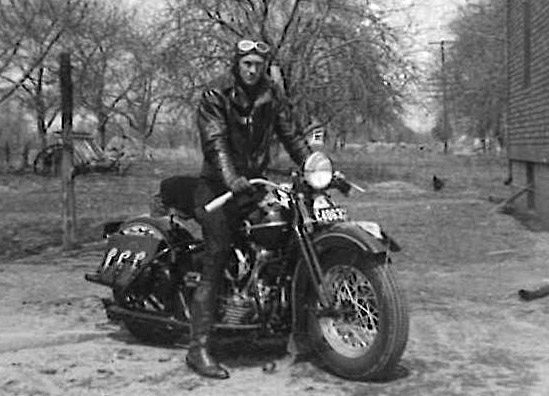
What we found out at CSC 10 years ago was that our modern Mustang market squarely centered on older folks (who often have a lot of money). Specifically, older folks who wanted a Mustang back in the day, but Dad said no. Or folks who rode big bikes way back when and who still wanted to ride, but they didn’t want to wrestle with 800-lb monsters. Fast forward 60 years, Dad’s no longer around, an Advil a day is just the ticket, and what do you know, I can buy that Mustang I always wanted and still ride. And they did. In droves.

Almost no one bought the standard, no-accessories, $4,995 CSC 150. They could have (that bike featured a slew of custom high end stuff, like billet and chrome all over the place and a world class finish). But those old guys who were denied an opportunity to scratch that Mustang itch as teenagers wanted more. A lot more. They would call on the phone (“I don’t do the Internet”), option the little California Scooters up to over $10,000 with lots more bling (custom wheels, custom paint, and more), and then put it all on a credit card. They wouldn’t attempt to negotiate price. California Scooter buyers wanted to spend more. Negotiate a lower price? Nope, that would demean the purchasing experience. It was full boat, full freight, and here’s my security code number…
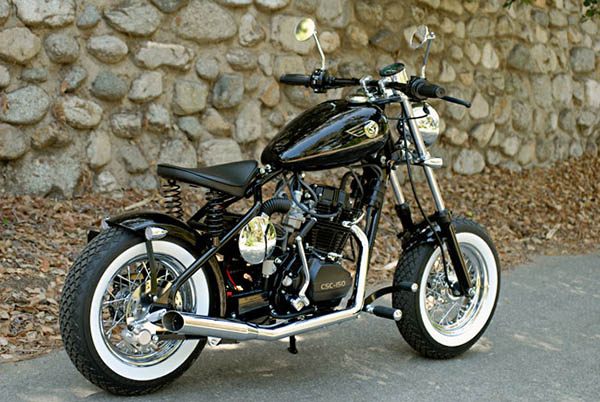
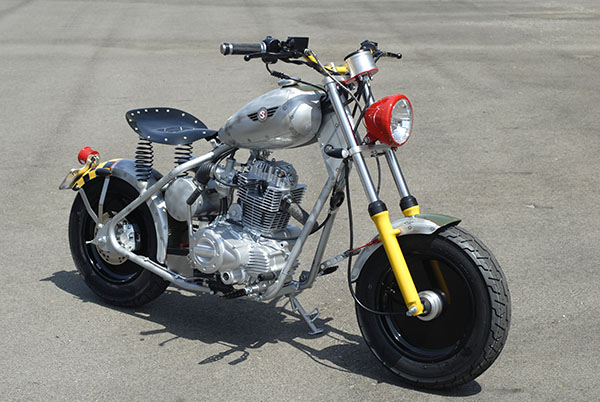
Those little bikes were awesome. I owned one of the very first ones, and I found I was having more fun on 150cc than I had on bikes with ten times the displacement. I rode mine all the way to Cabo San Lucas and back, but that’s a story for another blog. The Baja trip did a lot for CSC, too. The 150cc bikes had Honda CG clone engines manufactured in Asia, and the Baja trips showed the bikes were supremely reliable. We invited famous people to ride with us in Mexico and that was a force multiplier. The press coverage was off the charts.

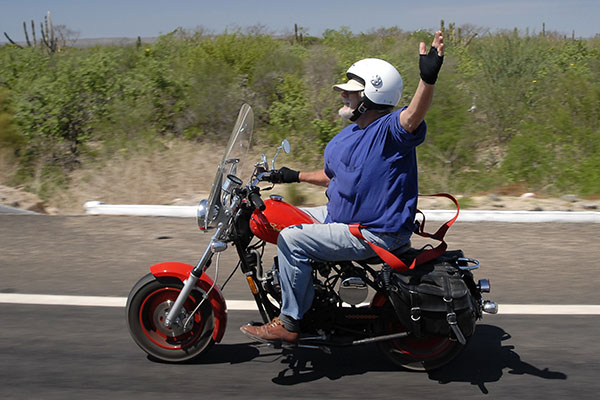
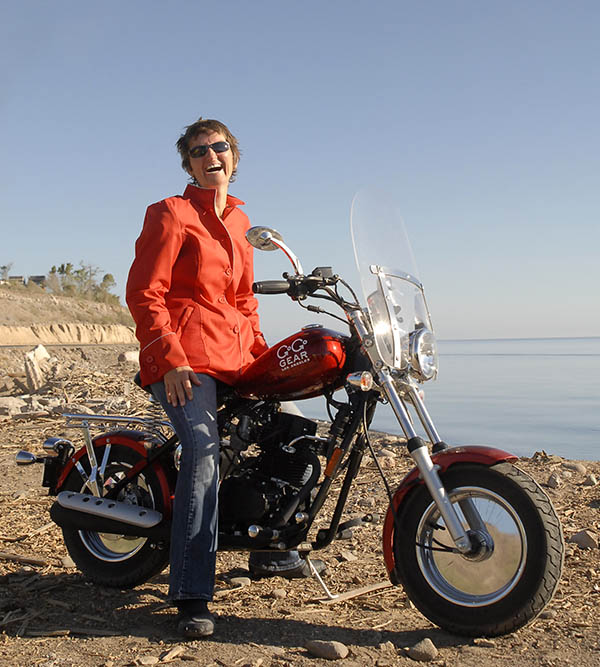
One of the things that sticks in my mind is the uninformed and the ignorant occasionally posting somewhere on an Internet forum that you could get a used Sportster for the kind of money people were happily spending on California Scooters. These keyboard commandos just didn’t get it. You could actually get a new Sportster for that kind of money, but that wasn’t the point. California Scooter buyers didn’t want a Sportster. They wanted, and were happy to pay top dollar for, a custom-crafted bit of motorcycle jewelry that could be both admired and ridden. A current classic.
There’s a market for such a thing. I know. I was there.
A call for time at the gym…
Here’s the last of three videos we made during our recent visit to Tinfiny Ranch a couple of weeks ago. Joe and I have been on several epic motorcycle rides, including the ride across China. It was awesome. When I watch those earlier videos, I’m reminded of how fit we were (we both lost weight on the China ride). Watching this one, I’m reminded that I need to spend more time at the gym (a lot more time).
Me? I’m headed out on a bicycle ride later this morning. I’ll hit the gym later. I love riding my Bianchi. I just need to do more of it.
We’ll have more on the blog later this weekend, and the focus will be on what you need to bring with you on a trip into Baja.
Stay tuned!
Mosins, and Enemy at the Gates
My initial exposure to the Mosin-Nagant rifle occurred when I saw the movie Enemy at the Gates a few years ago. At that time, I didn’t know anything about Mosin-Nagants other than I had seen them for sale at ridiculously low prices in Big 5 sporting goods stores. I never took Big 5 as a serious gun store (I went there when I needed jogging shoes), nor did I think of Mosins as interesting rifles. But Enemy at the Gates got my attention. It was very well done, starting with the opening scene when Vasily Zaitsev nailed a wolf with a Mosin, and progressing to the now famous “Can you shoot?” scene near the beginning of the movie.
Enemy at the Gates was set in Stalingrad. I studied that battle. Stalingrad was one of the world’s epic struggles. Hitler sent two million men into Russia; fewer than 3,000 returned to Germany. Incredible and awesome stuff, and snipers played a key role in turning the tide for the Russians.
Please click on the popup ads…it’s what keeps us going!
I didn’t run out and buy a Mosin-Nagant after watching Enemy at the Gates, but the seed had been planted. I also knew a bit about the history of modern sniping in the US military. I read a book a few years ago about Carlos Hathcock, our famous sniper of the Vietnam War (that book, incidentally, is awesome).

So, fast forward, and my interest in rifles ultimately extended to the Mosin-Nagant. I purchased my first Mosin-Nagant (a round receiver Tula; more on that in a moment) and I was impressed with it. For $179, it was cheap fun. I started reloading 7.62x54R ammo for the Mosin after I bought a couple of boxes of factory PRVI Partizan ammo. The PRVI ammo was stupid hot, not very accurate, and I knew I could develop a better load than the factory stuff. And I did, but that’s a story for another blog.
I told my shooting and riding buddies about my Mosin and how much fun I was having with it. After listening to me babble on, my friends started buying Mosins, too. One of those guys was my good buddy Paul up in Hollister. Paul picked up a real nice hex-receivered Izzy (Ivhevsk was one of the two Russian arsenals that produced Mosin-Nagant rifles; my first Mosin was made by Tula, the Russian other arsenal). Then, like most of us, Paul convinced himself one Mosin was not enough. Paul wanted a round receiver (the other Mosin receiver configuration).
After picking up his second Mosin-Nagant, Paul shot an email to me explaining that he found a couple of holes on the left side of the receiver filled in with threaded plugs, and that the outside of the receiver over these holes had been welded and filed smooth. He had researched it and, to his great surprise, Paul learned that his Mosin had been a former sniper rifle. It seems that after World War II, the Russians refurbed these guns (including their sniper weapons), and they returned the snipers to a non-sniper configuration by welding in the receiver’s scope mounting holes.
Let me go tangential for a minute and explain how the Russians made sniper rifles during World War II. Unlike us, the Russians did not build a sniper rifle from the ground up to be super accurate. They built more than 17 million Mosins, and they test fired every one. If a particular rifle was found to exceptionally accurate during their routine post-production test firing, it was marked to be a sniper rifle. And my good buddy Paul scored one.
I thought that was beyond cool. An actual Mosin-Nagant sniper rifle. It was Enemy at the Gates come home to roost. I was happy for Paul finding such a great rifle, and I was jealous. I thought that the entire Mosin thing was great…my getting into Mosins, Paul buying two Mosins based on my enthusiasm, and then finding out that one of his was a sniper rifle.
My interest was pumped, and remembering the scenes from Enemy at the Gates, I started looking for stuff on Vasily Zaitsev. That’s when I came upon these videos…
Enemy at the Gates certainly played up the Zaitsev-Koenig sniper duel, and so did The History Channel special. To hear it straight from the man himself (Vasily Zaitsev) it was just a chance encounter. Ah,Hollywood.
All the while this was going on, my interest in Mosins continued to develop. Just like Paul was convinced he needed a round receiver Mosin, I convinced myself I needed a hex receiver. Hey, at these prices, Mosin-Nagant rifles were like potato chips. You couldn’t have just one. So I found a 1935 hex receiver Izzy at Big 5 (Ivhevsk was the other Russian arsenal that built Mosins), I pulled out my credit card, I waited my obligatory People’s Republik of Kalifornia 10 days, and it was mine. The bore on the new-to-me ’35 Izzy was about in the same condition as the 1940 rifle, which is to say it looked like it had been rode hard and put away wet. Maybe I’m being too kind. It looked like a sewer pipe.
Then, on a motorcycle ride through Big Bear, California, I stopped at their Big 5. Like most Big 5 stores, the kids that worked there didn’t know much about these rifles, and the one rifle they had on display looked pretty decrepit. I asked the same question I always did when seeing a rifle on the sales rack, and they dutifully pulled out the other Mosins they had in their safe. To make a long story short, I found another 1935 hex receiver rifle with all matching numbers and I pulled the trigger (figuratively speaking) on that one, too. Another 10 days went by and I made the trek back up to Big Bear to pick up my latest Pringle.
The next day I went to the range with all three of my Mosins – the first 1940 Tula, the second 1935 Izzy with a hex receiver, and my latest 1935 hex receiver Tula (the Big Bear rifle). Of the three, I had previously only fired the 1940 Tula.
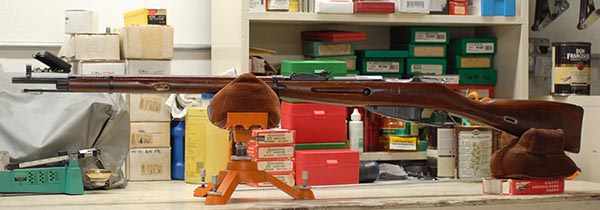

I shot the first two Mosins, and they were good shooters. Then I tried the Big Bear Tula, and at first, I thought the accuracy was terrible. My first shot was on the paper at 50 yards, but my second shot had missed the paper completely (that’s how it looked through the spotting scope). I fired a third round and that one was satisfyingly only about 3/8 of an inch away from the first. I walked downrange to inspect the target, and wowee!
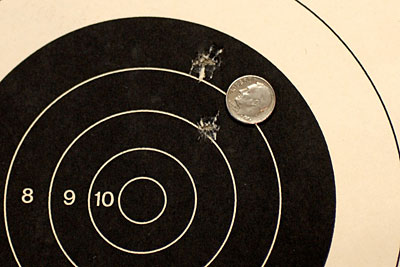
That second shot wasn’t off the paper…it went through the same hole as the first shot! Thinking that this was just a fluke, I fired another group of three shots, with similar results! Wowee again! With open sights, this was iron sight accuracy I just wasn’t used to. It was stellar. Bear in mind these were the first shots I had put through this rifle. I was elated.
Knowing that this Tula was a shooter, I took the rifle apart later that day to give it a good cleaning. I noticed the little nicks and dings you see when you do this sort of thing, including what looked like painted over weld spatter on the left exterior of the receiver. Even though Paul had explained the findings on his sniper rifle to me, it never occurred to me what I was working with. I didn’t think about sniper rifles; I just thought that due to this particular rifle’s condition it probably saw action in World War II and the Russian refurb arsenal did the best they could to clean it up. And I knew it was a shooter. The thing was just flat accurate. Amazingly so.
I snapped a bunch of photos when I reassembled the Tula, and here’s the money shot…
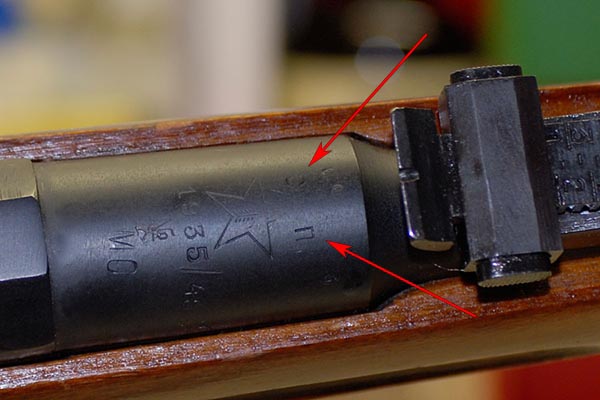
I didn’t know what all the markings on it meant; I simply liked the photo and I posted it on one of the Mosin Internet forums.
Well, the Mosin forum lit up, and the comments started pouring in. The first one was a simple one-word comment:
Sniper.
Hmmm. How do you know that, I posted, watching more comments pour in about my Mosin being a sniper.
It’s the markings that look like a C and an N, the forum dudes told me. One guy wrote “Look inside the receiver and you’ll see the two plugs on the left side…I know they’ll be there.”
Wow, before I even looked, it all came together for me. The weld spatter on the outside of the receiver. The overall condition of the rifle (rode hard, put away wet, definitely not pristine). I pulled the bolt back, looked inside, and there they were…the plugged holes where the sniper scope used to be. Awesome! I had hit the jackpot, just like Paul did!
So this whole Mosin Sniper thing really had my attention. I poked around on the Internet a bit more and these photos showed up…

That’s Roza Shanina, “the unseen terror of East Prussia,” holding a Mosin-Nagant sniper rifle. She’s credited with 59 kills during World War II. Her story is fascinating and would make for a great book. It all sounds like a hell of a story.
You’ll notice there’s a scope on Roza Shanina’s rifle, which is what the sniper rifles had. The mount for it required two threaded holes on the receiver, the two holes the Russians plugged when they refurbed the rifles. The sniper rifles also had a longer, downturned bolt handle that allowed the shooter to work the bolt with the scope mounted. All very cool stuff. The Stephen Hunter novel references to a fictionalized Shanina are oblique and like most novels, some of the technical stuff is wrong. But it’s a great read.
You can still buy Mosin-Nagant rifles, but the prices are climbing sharply and these rifles are not as readily available as they were just two or three years ago That’s probably a good thing, because my credit card can stay hidden away in my wallet. But I still like to look, and if I see a Mosin on the rack in any gun store, I’ll check the receiver for the sniper markings and the two weld plugs where the scope used to be. I haven’t seen a single one since I scored mine, and that’s a satisfying feeling.
More Tales of the Gun!
Join our Facebook Milsurp target shooting group.
Never miss an ExNotes blog:
An interesting NY Times video…
Here’s a video that popped up on my YouTube this morning…
I have mixed emotions on the topic…I’ve been to Sturgis a couple of times (once, on a Chinese motorcycle), I’ve been in Chinese factories, I’ve managed manufacturing facilities where I had to contend with labor costs, and I’ve owned a couple of Harley-Davidsons. I guess if the answers were easy there wouldn’t be any discussion.

